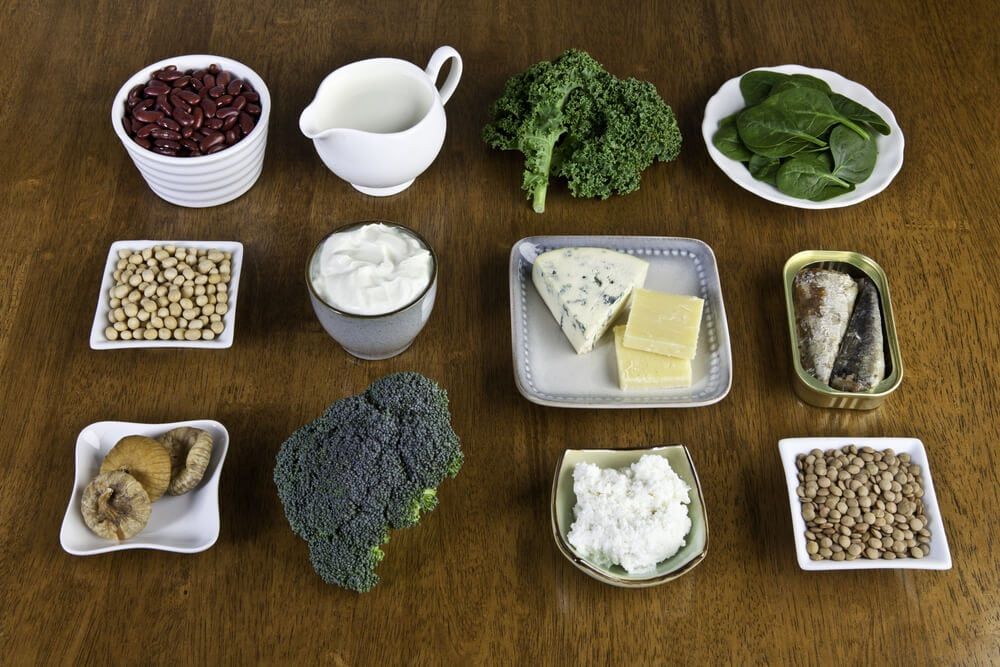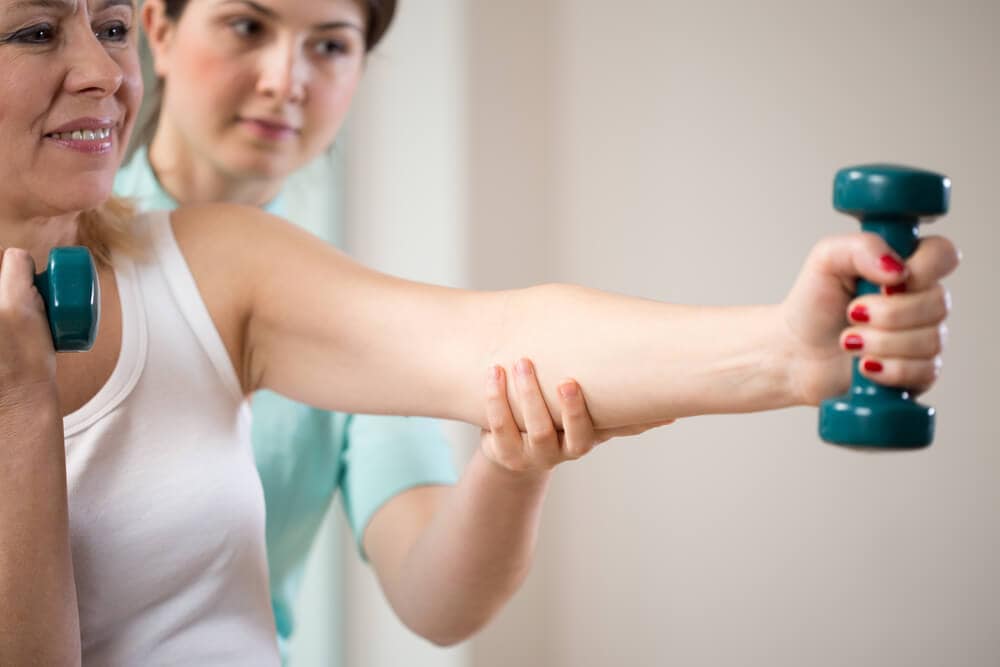Osteoporosis is a bone disease that affects many people worldwide, leaving individuals susceptible to fractures that can impact their quality of life in minor to severe ways. However, through lifestyle changes, such as diet, regular exercise and medication where necessary, osteoporosis can be prevented and managed well. In this blog, we will explore the causes, symptoms, risk factors, treatments for osteoporosis and prevention of osteoporosis.
What Is Osteoporosis?

Osteoporosis is the loss of bone mass causing bones to become fragile and brittle, particularly in women over the age of 50. The decrease in bone density starts to occur when the body fails to form enough new bone, or when an excess of existing bone is reabsorbed by the body. Studies have estimated that one in two women and one in five men will have an osteoporotic fracture in their lifetime.
What Are The Causes and Risk Factors Associated with Osteoporosis?
Bones go through a cycle of remodelling, creating new bone and breaking down old bone constantly. During childhood and adolescent years, the process of making new bone occurs at a faster rate than the process of breaking down old bone. This process starts to slow down after adolescents, and at 30 years old the rate of bone loss usually becomes faster than bone renewal. The amount of bone mass acquired before the increase in the rate of bone loss may impact the chances of an individual developing osteoporosis.
There are several risk factors that can increase the development of osteoporosis, which include:
Aging
As we age, our bones become less dense and weaker, increasing the risk of osteoporosis.
Hormones
Hormones play a significant role in bone health. Hormonal changes throughout life can impact the development of osteoporosis.
Women are at a higher risk of developing osteoporosis than men, especially after menopause when there is a decrease in estrogen, which can lead to rapid loss of bone mass. Estrogen helps activate osteoblasts, which are cells that play a role in the formation of bone and decreases the activity of osteoclasts, which are the cells that lead to bone loss.
In men, low levels of testosterone similarly lead to an increased loss of bone mass. Testosterone helps regulate bone density by stimulating osteoblast activity and reducing osteoclast activity.
Other hormones, including thyroid hormone and parathyroid hormone, a hormone that regulates calcium levels in the blood, can also have an impact on bone turnover.
Family History
Having family members with osteoporosis increases the risk of an individual’s development of osteoporosis, particularly if an individual’s parents had osteoporosis.
Medications
Long-term uses of certain medications such as glucocorticoids and anticonvulsants have been associated with osteoporosis.
Medical Condition
Individuals with conditions such as hyperthyroidism, chronic kidney or liver disease, inflammatory bowel disease, cancer and celiac may be at higher risk of developing osteoporosis.
Dietary Factors
Poor nutrition over a long period of time can cause deficiencies in essential nutrients and minerals that support bone health. These include vitamin D, calcium, vitamin K, magnesium and potassium.
Lifestyle Choices
Consuming caffeine, excessive alcohol and sodium can negatively affect bone health. Caffeine interferes with the absorption of calcium and excess alcohol and can decrease bone formation. High amounts of sodium consumption can lead to increased calcium excretion through the urine.
Lack of physical activity and smoking can increase the risk of osteoporosis.
What Are The Signs and Symptoms of Osteoporosis?
Osteoporosis is often referred to as a “silent disease” because it can progress for years without any noticeable symptoms. However, as the condition worsens, several signs and symptoms may become apparent. Some of the most common signs and symptoms of osteoporosis include:
- Back pain: This is one of the most common symptoms of osteoporosis, which is caused by fractured or collapsed vertebrae.
- Loss of height: As the bones in the spine become weaker and collapse, the height of an individual may decrease.
- Stooped posture: When vertebrae in the spine collapse, it can cause a stooped posture or curvature of the spine.
- Bone fractures: Individuals with osteoporosis are more susceptible to fractures, especially in the wrist, hip, and spine.
- Weak grip strength: Reduced grip strength is associated with low bone density and increased risk of fractures.
- Tooth loss: The jaw bone can also become weaker with osteoporosis, leading to tooth loss or difficulty chewing.
8 Natural Remedies To Prevent and Support Osteoporosis
1. Calcium & Vitamin D

Getting enough vitamin D is crucial for maintaining strong bones. Sunlight exposure and food sources such as fatty fish and egg yolks can help provide vitamin D. Adequate intake of calcium is important for bone health. Good dietary sources of calcium include dairy products and leafy green vegetables.
2. Magnesium
Magnesium is necessary for the absorption and metabolism of calcium. Good dietary sources of magnesium include nuts, seeds, whole grains, and dark leafy greens.
3. Vitamin K
Vitamin K is necessary for bone formation and repair. Good dietary sources of vitamin K include leafy green vegetables, broccoli, and brussels sprouts.
4. Protein
Adequate protein intake is important for building and maintaining muscle and bone mass. Good dietary sources of protein include lean meats, poultry, fish, beans, and tofu.
5. Lifestyle Changes
Quitting smoking and reducing alcohol and caffeine consumption can also help improve bone health.
6. Engage in Regular Physical Activity

Regular weight-bearing and strength-training exercises can help improve bone density and reduce the risk of fractures.
7. Acupuncture
Research has suggested that acupuncture may be beneficial for improving bone density in postmenopausal women with osteoporosis, combined with calcium and vitamin D with a significant increase in bone density in the spine and hip. Another study found that acupuncture may help reduce pain and improve physical function in individuals with osteoporotic vertebral compression fractures.
8. Fall Prevention
- Exercise regularly: Regular exercise, particularly weight-bearing and resistance exercises, can help improve balance, coordination, and muscle strength, all of which can help reduce the risk of falls.
- Improve home safety: Make sure your home is free of tripping hazards such as loose rugs, electrical cords, and clutter. Install handrails on staircases, and use non-slip mats in the bathroom.
- Wear appropriate footwear: Wear shoes that fit well and provide good support. Avoid high heels and shoes with slippery soles.
- Improve lighting: Make sure your home is well-lit, especially in areas where you are most likely to walk.
- Take your time: Be mindful of your surroundings and take your time when walking or standing up. Avoid rushing or sudden movements that can throw you off balance.
- Use assistive devices: If you have difficulty with balance or mobility, consider using a cane or walker to help stabilize yourself.
- Get regular eye check-ups: Poor vision can increase the risk of falls. Make sure to get regular eye check-ups and update your glasses or contact lenses as needed.
Conventional Treatment Options for Osteoporosis
Medications such as bisphosphonates, denosumab, teriparatide, and hormone therapy can be used to reduce the risk of fractures by increasing bone density and strength. Patients are also usually placed on calcium and vitamin D supplements.
Regular exercise is encouraged, particularly weight-bearing and resistance exercises, which can help improve bone density and reduce the risk of fractures.
Falls are a common cause of fractures in individuals with osteoporosis. Preventive measures such as removing tripping hazards in the home, using handrails on staircases, and wearing non-slip shoes are advised to help reduce the risk of falls.
Source: Annex





